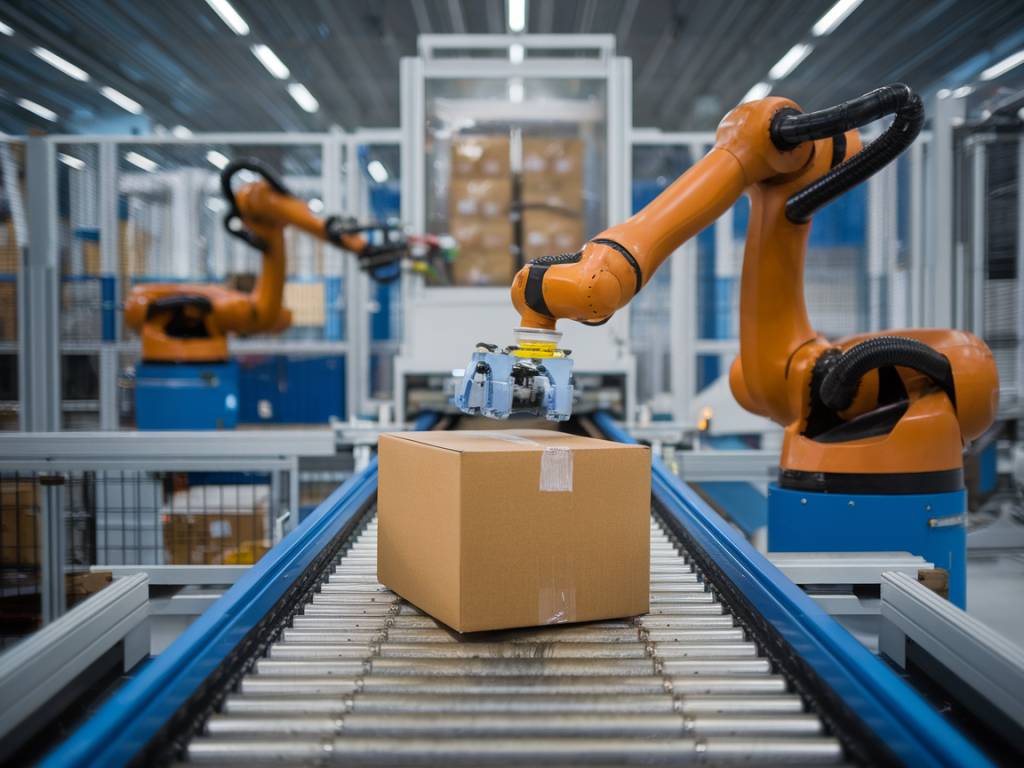In the ever-evolving landscape of logistics and supply chain management, the focus on reverse logistics has intensified. The growth of e-commerce and stringent return policies have compelled businesses to streamline their returns process. One of the promising solutions to address these challenges is the integration of robotics in reverse logistics. In this detailed exploration, we will delve into how robotics can significantly enhance the returns process, providing efficiency, accuracy, and cost-effectiveness.
The Challenges of Reverse Logistics
Reverse logistics, in essence, is the process of moving goods from their final destination back to the original seller or manufacturer for returns, refurbishment, or recycling. This is a complex process laden with several logistical challenges such as:
Traditional methods of managing returns often result in inefficiencies, human errors, and increased operational costs. Therefore, adopting advanced technology, specifically robotics, presents a substantial opportunity to optimize reverse logistics.
The Role of Robotics in Reverse Logistics
Robotics technology encompasses various automated systems such as robotic arms, autonomous mobile robots (AMRs), and conveyor systems. These innovations can be employed at different stages of the reverse logistics process, offering numerous benefits.
Enhancing Accuracy and Speed
One of the primary advantages of utilizing robotics in reverse logistics is the improvement in accuracy and speed. Robots equipped with advanced sensors and machine vision can categorize and sort returned items much more rapidly than human workers. This reduces the time and errors associated with manual sorting. For example, robotic arms can quickly scan barcodes or RFID tags to identify products and place them in the appropriate location for further processing.
Automated Inspection and Quality Control
Maintaining product quality is crucial in reverse logistics. Robotic systems integrated with machine learning algorithms can perform detailed inspections of returned goods. These robots can detect defects, assess the condition of the products, and determine whether an item is fit for resale, refurbishment, or recycling. Automation in quality control ensures consistency and reliability, which is often a challenge with manual inspections.
Cost Savings and Efficiency
Robotics in reverse logistics can lead to significant cost savings. Automated systems reduce the dependency on manual labor, which not only minimizes labor costs but also alleviates issues related to labor shortages and high turnover rates commonly seen in logistics centers. Furthermore, robots can operate 24/7 without fatigue, dramatically increasing throughput and reducing processing times for returns.
Optimizing Inventory Management
Effective inventory management is a key component of reverse logistics. Robotics can play a pivotal role in maintaining accurate inventory records. For instance, autonomous mobile robots can transport returned items to designated areas within the warehouse, and advanced inventory management software can keep real-time records of the stock levels. This ensures transparency and aids in better planning and decision-making.
Environmental Benefits
The integration of robotics in reverse logistics also yields environmental benefits. The precise sorting and categorization enabled by robots ensure that products destined for recycling or disposal are handled correctly, minimizing environmental impact. Moreover, efficient reverse logistics can promote the reuse and refurbishment of returned goods, contributing to a circular economy and reducing waste.
Case Studies: Real-world Applications
Several companies have already begun leveraging robotics in reverse logistics to improve their returns process. For instance, Amazon employs a range of automated systems, including robotic arms and AMRs, in their fulfillment centers to manage the high volume of returns efficiently. Similarly, companies like Ocado have adopted robotic solutions to enhance their reverse logistics operations, resulting in reduced processing times and improved accuracy.
Future Trends and Innovations
As technology continues to advance, the role of robotics in reverse logistics is expected to expand further. Developments in artificial intelligence and machine learning are paving the way for more sophisticated robotic systems capable of handling more complex tasks. Predictive analytics, powered by AI, can anticipate return patterns and optimize the deployment of robotic resources. Additionally, collaborations between robotics companies and logistics providers are likely to spur innovation, creating more customized and efficient solutions for reverse logistics.
Adopting Robotics: Considerations and Best Practices
While the adoption of robotics in reverse logistics offers numerous benefits, it is essential for businesses to consider certain factors to ensure successful implementation. Here are some best practices:
Integration is pivotal; robust collaboration between the robotics technology provider and the logistics team can lead to customized solutions that effectively address specific business needs.
Ultimately, the strategic use of robotics in reverse logistics represents a significant leap forward in improving the returns process. By embracing automation, businesses can not only enhance operational efficiency and reduce costs but also contribute to sustainable practices and better customer satisfaction.

